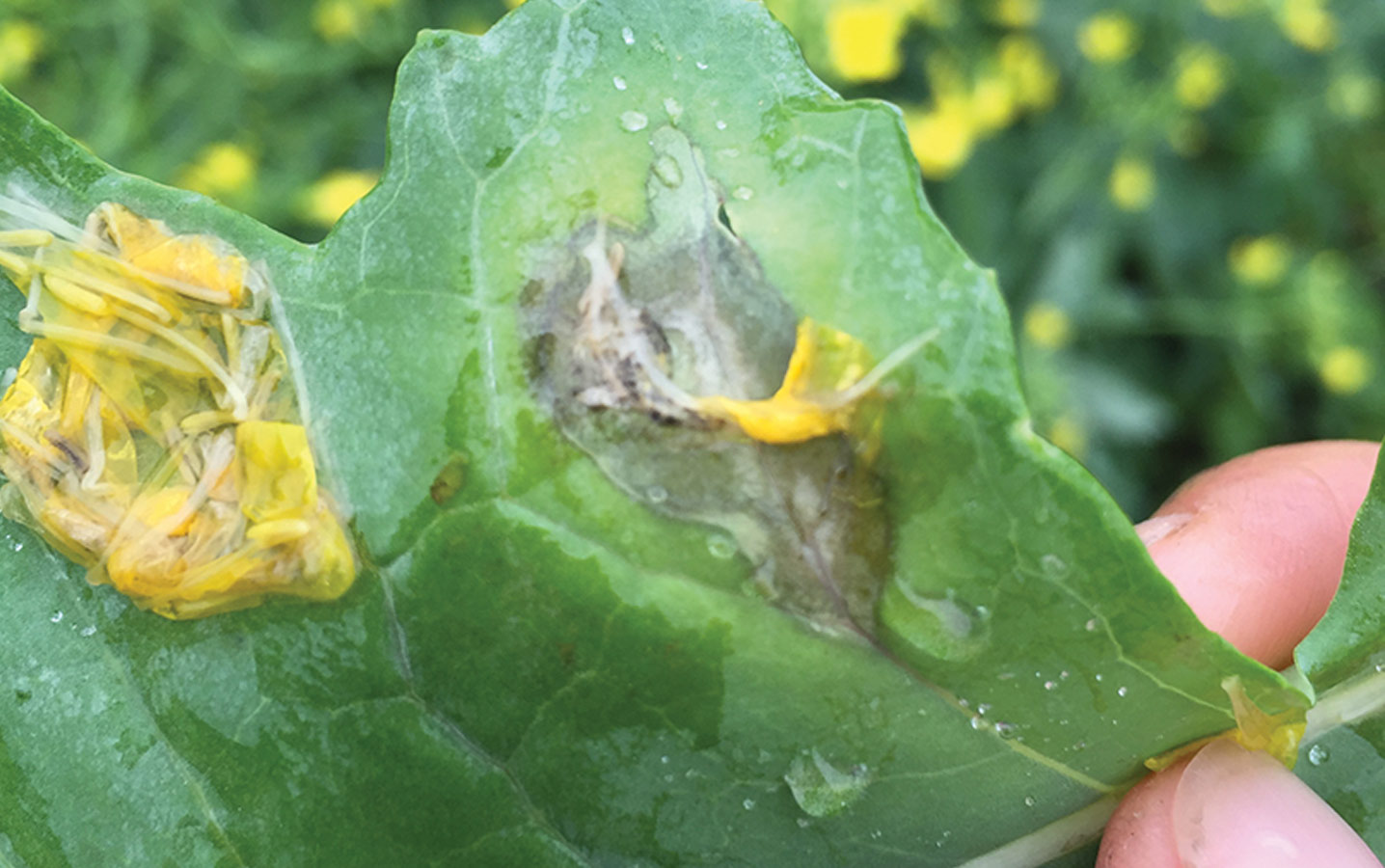Economize on fungicide through rapid detection of sclerotinia
Key Result: Sclerotinia stem rot, caused by Sclerotinia sclerotiorum, is commonly managed by routine application of fungicides, typically without any indication of disease risk. Through this study, a quantitative polymerase chain reaction (qPCR)-based assay was developed to measure S. sclerotiorum DNA in canola petals, enabling rapid and accurate estimates of infestation levels when timely fungicide application decisions need
to be made.
Project title, Principal investigator: “Development of a rapid quantitative detection method for sclerotinia stem rot inoculum to aid risk assessments and fungicide spray decisions,” Stephen Strelkov, University
of Alberta
Funding: ACIDF, Alberta Canola, WGRF, AAFC
The effectiveness of many sclerotinia stem rot management strategies is limited by the wide host range of the S. sclerotiorum pathogen, production of wind-borne ascospores and the sporadic nature of disease development. Previously developed risk assessment methods have focused on petal infestation since this is an important stage of the disease cycle in canola. Quantitative PCR analysis can provide a more rapid and accurate assessment of petal infestation levels.
Stephen Strelkov at the University of Alberta led this two-year study with the objectives to: (1) develop and refine a rapid quantitative method for pathogen detection in canola flowers; (2) understand the relationship between the amount of pathogen on canola petals and final stem rot levels in commercial fields; and (3) assess correlations between pathogen detection, weather-based forecasts and final stem rot levels.
A hydrolysis probe-based qPCR assay was developed that could detect as little as 8.0 x 10-4 nanograms (ng) of S. sclerotiorum DNA with a high degree of specificity. Evaluation of petals collected at five sampling points in each of 10 commercial canola fields on each of two sampling dates (corresponding to 20-30 per cent flower and 40-50 per cent flower) revealed infestation levels ranging from zero to 3.3 x 101 ng S. sclerotiorum DNA per petal.
Strelkov and his team explored the relationship between petal infestation levels and final stem rot incidence in canola further in two additional studies. In the first study, conducted over two years, petal infestation was compared with disease incidence in 34-35 commercial canola fields across the Prairies. In the second study, these parameters were compared over three years in nine to 11 fields located in central Alberta.
Petal infestation level, as determined with the qPCR assay at 40-50 per cent flower, accounted for 60-92 per cent of the variation in sclerotinia stem rot incidence under field conditions in Western Canada. Petal infestation level was influenced by petal age and by the time of day when samples were collected. A diurnal fluctuation in infestation levels was found in young, but not old petals, with significantly higher infestation in afternoon- versus morning-collected samples. Sclerotinia stem rot development also was influenced by environmental conditions, with relative humidity playing a more significant role in disease development than temperature.
Extensive knowledge transfer of these findings has included publication of abstracts in the Canadian Journal of Plant Pathology* and the publication of a full-length, peer-reviewed article in Plant Disease**, as well as presentations in various industry and scientific meetings. The qPCR assay developed as part of this project is highly sensitive and specific for S. sclerotiorum, and in addition to its utility as a potential risk-assessment tool, it also may prove useful in studies of the epidemiology of sclerotinia stem rot.
The published refereed paper also discusses the considerable variation observed in the amount of petal infestation in different fields and at different crop stages, indicating the importance of assessing petal infestation and risk potential for a particular field as opposed to an assessment of risk based on regional conditions.
The qPCR assay may serve as the basis for a risk assessment system as well as representing a useful tool for the study of the incidence, distribution and possible control of Sclerotinia stem rot of canola. It is important to emphasize, however, that this forecasting system should be linked to environmental indicators as well as cropping history, seeding date and crop canopy conditions, which may influence stem rot development and the need to spray a fungicide.
* Ziesman, B.R., Turkington, T.K., Basu, U., and Strelkov, S.E. 2014. Initial validation of a quantitative PCR-based system for detection of Sclerotinia sclerotiorum on canola. Can. J. Plant Pathol. 36: 132. (Abstr.).
** Ziesman, B.R., Turkington, T.K., Basu, U., and Strelkov, S.E. 2016. A quantitative PCR system for measuring Sclerotinia sclerotiorum in canola (Brassica napus). Plant Dis. 100: 984-990.





